The Les Cayes Botanical Garden, the only one officially recognized for Haiti by the International Botanical Garden Conservation Network, had to close its doors for more than twenty days in August 2025
Haiti has one of the richest biodiversities in the Caribbean.
But its conservation is compromised by a lack of funding and the increased control exercised by armed gangs over protected areas.

Landscaping of the Les Cayes Botanical Garden, July 2024. Photo: Les Cayes Botanical Garden
Private initiatives, particularly botanical gardens, are attempting to preserve endemic species, ensure scientific monitoring, raise public awareness of the importance of biodiversity and promote ecotourism.
But the survival of these initiatives is threatened by land conflicts, lack of resources and the absence of state supervision, according to half a dozen leaders of these initiatives contacted by AyiboPost.
In Les Cayes, in southern Haiti, a land dispute was enough to reveal the fragility of a unique project that began in 2003.
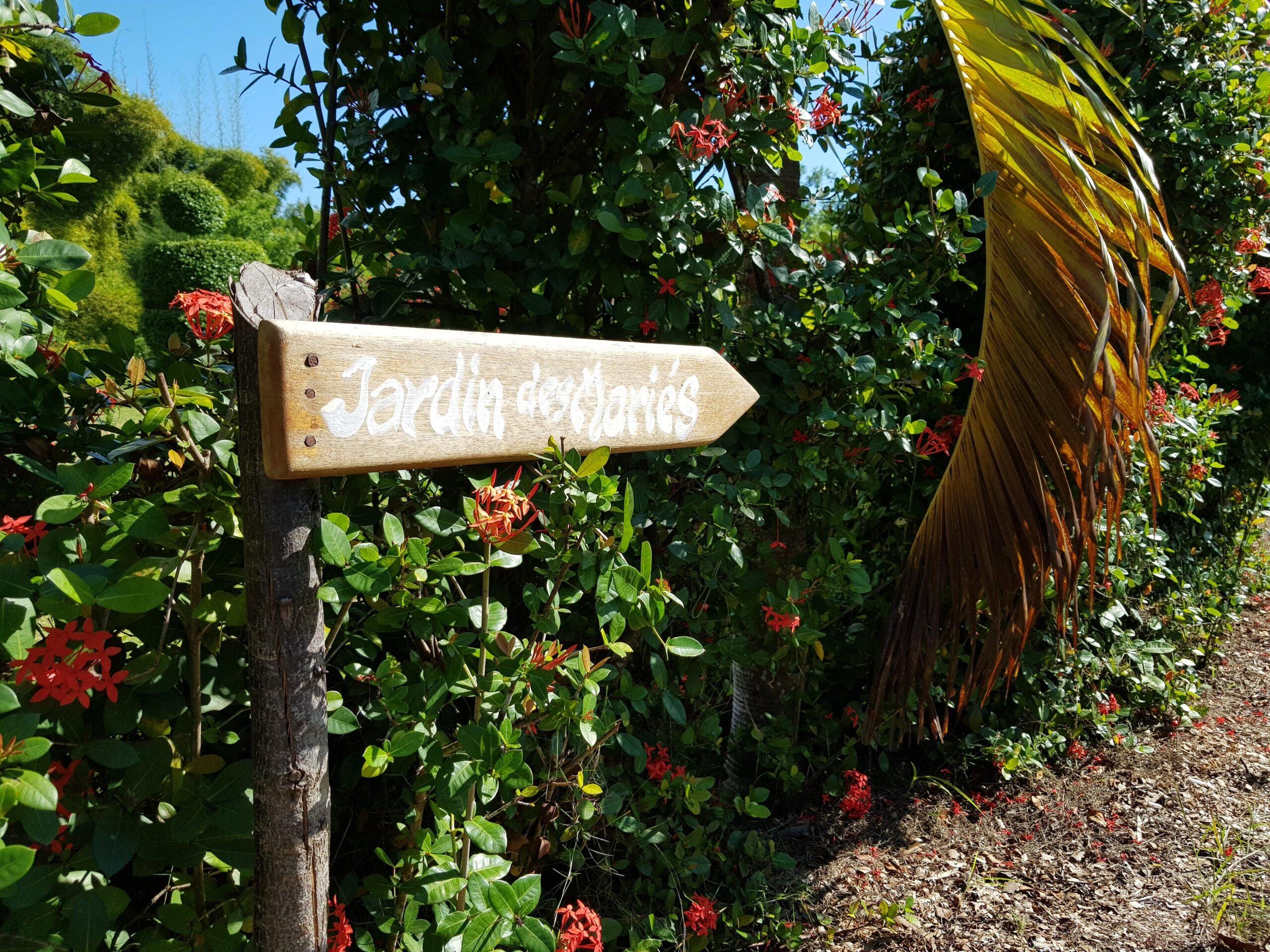
Wedding garden at the Les Cayes Botanical Garden. Photo | Widlore Mérancourt for AyiboPost

Aerial view of the heart-shaped landscape at Les Cayes Botanical Garden, February 2024. Photo: Les Cayes Botanical Garden
The Les Cayes Botanical Garden, the only one officially recognized for Haiti by the International Botanical Garden Conservation Network (BGCI), was forced to close its doors for more than twenty days in August 2025.
The owners of the land, leased for more than twenty years, are now seeking to repossess it.
« We proposed to the Haitian government to purchase the land in order to secure the area, but the agreement never came to fruition. The owners had not presented the necessary property titles, » William Cinéa, a forestry engineer and initiator of the project, explained to AyiboPost.
The consequences were immediate: internships were canceled, visits suspended for around forty students, rare species left unattended.
Even after the site reopens, uncertainty remains. « All efforts to reach an agreement and ensure the continuity of our activities are being undertaken on a personal basis, without support from the Haitian government, » emphasizes Cinéa, who is continuing negotiations with the owners.
The Les Cayes Botanical Garden, the only one officially recognized for Haiti by the International Botanical Garden Conservation Network (BGCI), was forced to close its doors for more than twenty days in August 2025.
The process of purchasing the land in order to preserve this heritage began in 2018 with the National Agency for Protected Areas (ANAP), under the direction of Jeantel Joseph.
But the talks broke off.
According to Prénord Courdo, technical director of ANAP, who was also involved at the time, there is no certainty today that the process will resume.
« These discussions were initiated under a previous administration. To relaunch them, we would need a new assessment, a site visit, and an inclusion in our budget, » explains the official, who cannot confirm whether the state is still considering acquiring the land.
The Cayes Botanical Garden contains various endemic plants such as Ti pwason, scientifically named Amyris apiculata, Agave brevispina, Lang Bèf (Clavija domingensis), etc. The initiative survives thanks to its own resources, anxious to find a solution that will guarantee its sustainability.
Read also: Gangs control access to protected areas in Haiti
Article 256 of the 1987 Constitution mentions the obligation for the State to proceed with the “creation and maintenance of botanical and zoological gardens in certain parts of the territory”.
Contacted by AyiboPost, Courdo, technical director of ANAP, admitted that he did not have a precise idea of the number of botanical gardens existing in the country.
In November 2015, a project to create a National Botanical Garden of Haiti (JBNH) was launched in the town of Bonnet, commune of Ganthier, around twelve kilometers from Croix-des-Bouquets.
This project was initiated in partnership with the Ministry of the Environment, the Ministry of National Education, the Ministry of Agriculture and the Haitian National Commission for Cooperation with UNESCO.
The site, located in the La Selle biosphere reserve, is on the edge of the national road, between two protected areas – Bois Frèch and Source Zabeth.
But today gangs control access to these spaces.
These are not isolated cases. Other projects of the same type as the Les Cayes Botanical Garden, supported by the private sector, are experiencing serious difficulties.
In the Northwest, in Ouanaminthe, a botanical conservation initiative was launched in 2013.
Led by two environmental activists, Alex Milhomme and Sanchez Pierre, the Ouanaminthe Botanical Garden, located in the town of Bédou, showcases and collects plants in order to contribute to the preservation of local flora.
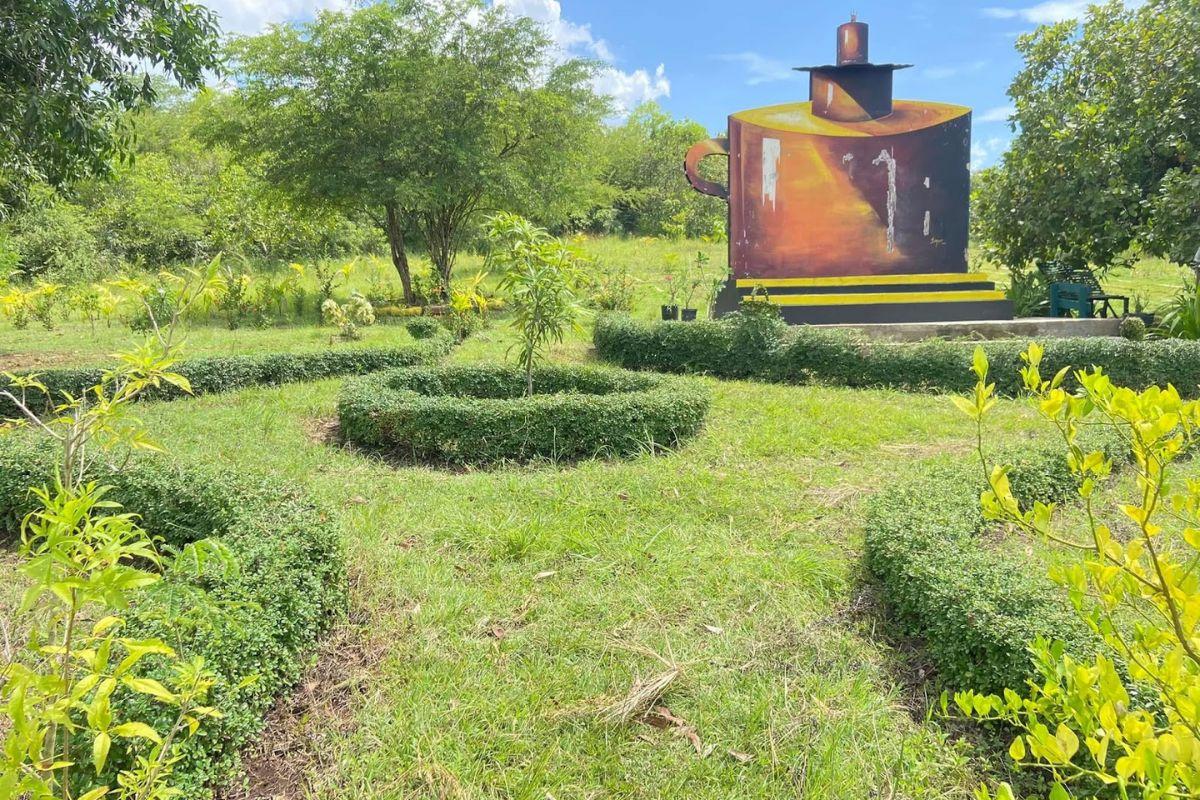
In the heart of the Ouanaminthe Botanical Garden, in the northeast of the country, August 2024. Source: Ouanaminthe Botanical Garden.
« We started small, and then the project grew over time. We did it because it was a great way to beautify the community, » says Sanchez Pierre, co-founder of the initiative.
The garden covers approximately five hectares. It is home to ornamental plants, as well as around twenty native and endemic species identified by the gardeners, such as Tabebuia obovata, Calophyllum antillanum, commonly known as Dame-Marie, and Cupania americana.
The space also welcomes agronomy trainees, has a beekeeping sector, prepares seedlings for sale, and organizes a fair every May 1st to showcase its products.
The garden currently has 5,000 seedlings, including species such as ylang-ylang, flamboyant, tamarind, avocado, latanier, mango, palm and hibiscus, according to the manager.
We started small, and then the project grew over time. We did it because it was a great way to beautify the community.
– Sanchez Pierre
However, the initiative faces major funding and location-related challenges.
« The garden’s location makes access to water very difficult. We have seven maintenance employees on the payroll, but our operating resources are limited, » explains Pierre, a specialist in land use planning, geography, and the environment.
The government does not provide any funding for the initiative. According to Pierre, the project survives solely on donations, volunteers, and contributions from visitors.
According to Alex Milhomme, the project’s initiator, the initiative generates less than 10,000 gourdes monthly, while those responsible spend around 100,000 gourdes per month on its operation.
“Without sustainable funding, everything could stop overnight,” Pierre told AyiboPost.
Other efforts in the same direction are affected by the insecurity prevailing in the country.
In the Nord department, Élonge Othelot, 72, a retired engineer-architect, founded the Émari de Milot Botanical Garden in 2013, located in the town of Lory.

A welcome sign at the Emari Botanical Garden in Milot, Nord department, in 2018. Photo: Elonge Othelot.
Covering four hectares, the site is home to several trees that are uncommon in Haiti, such as the apple tree, the Mexican apple tree, the Malaysian apple tree, the dunigère almond tree and the Terminalia mantaly.

A ripe Malaysian apple tree at the Emari Botanical Garden in Milot, June 2019. Photo: Elonge Othelot.
Previously, the land was used for growing sugar cane.
To enrich his collection, the former professor and civil servant imported seeds from abroad, including baobabs and various species of palm trees such as Bismarckia nobilis, Copernicia hospita and Pachypodium geayi.
“When the situation in the country was not so fragile, I traveled to many regions in Haiti looking for seeds,” Othelot recalls.
The garden receives an average of one hundred visitors per month.
Currently unable to pay employees, the manager says he is facing a labor shortage.
« I started with a team of ten employees. Today, there is practically only one left, » regrets Othelot, who discusses the repercussions on maintenance resulting from this reality.
In 2018, officials from the Ministry of the Environment promised Othelot that they would classify the area as a protected area, but the process never came to fruition.
« My wish is to see this place recognized as a national space, which contributes to education and the preservation of the environment in Haiti, » he says, adding that he has devoted his entire daily life since his retirement to botanical conservation.

A Bismarckia palm (Bismarckia nobilis), native to Madagascar and little known in Haiti, at the Emari Botanical Garden in Milot, September 2022. Photo: Elonge Othelot
According to the latest report from the Ministry of the Environment on the state of biodiversity in Haiti, dating from 2019, the country has more than 5,000 plant species, 2,000 of which are endemic.
These figures come from rare studies carried out by international organizations.
From orchids to ferns, including iconic trees like the mapou (Ceiba pentandra), many of these species are threatened by deforestation, soil erosion and climate change.
Without solid conservation structures, these plants risk disappearing, taking with them an ecological, scientific and also cultural heritage.
While there are gardens that already have a fairly developed structure, others, with the modest means at their disposal, would like to develop their initiative.
My wish is to see this place recognized as a national space, which contributes to education and the preservation of the environment in Haiti.
– Longe Othelot
This is the case of the Villa John Botanical Garden, located in Dexia, on the road to Les Cayes airport.
Its founder, John Moïse Beauséjour, explains that he has been working on this project since 2004.
“I have always been interested in environmental conservation. Creating such a space has been a long-standing dream,” he says.
“The land was once abandoned and used as a dump. I decided to transform it by planting various species, both ornamental and medicinal, in order to make it a place capable of attracting visitors.”
Although establishing a botanical garden generally requires the expertise of agronomists and botanists, Beauséjour is self-taught. He says he taught himself, driven by his passion and experience working the land since childhood.
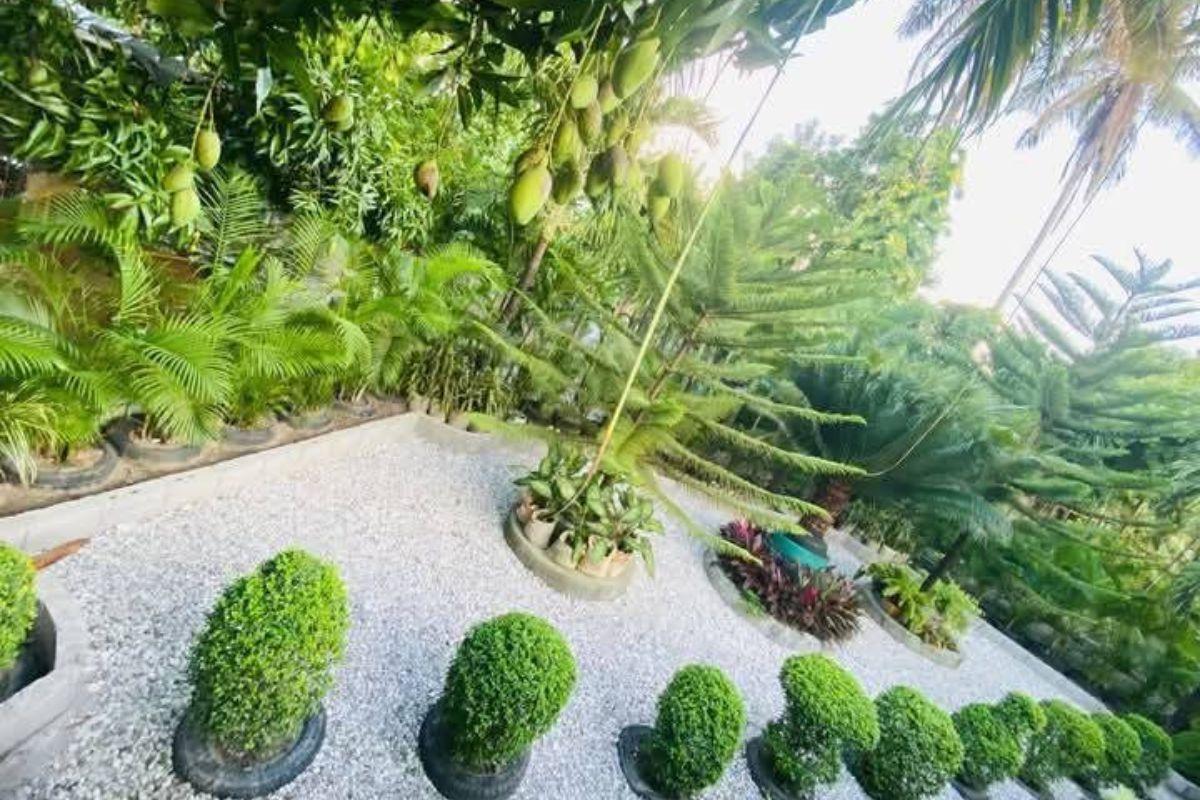
View of a plot of land at the Villa John Botanical Garden in Le Cayes. Photo: John Moïse Beauséjour
« All the steps are personal, » he insists, while expressing the wish to have a larger space and funding to strengthen and develop his project, which covers almost one hectare.
The fragility of Haitian botanical gardens contrasts with the very different reality of neighboring countries.
For example, in the Dominican Republic, the Dr. Rafael María Moscoso National Botanical Garden is recognized as the largest in the Caribbean, with an area of approximately 200 hectares and more than 69,000 classified botanical species.
“Preserving a plant means preserving a memory, a medicine, an ecological balance,” explains Cinéa. According to him, Haiti could be a regional reference if the State invested seriously in its botanical gardens.
By : Lucnise Duquereste
Cover : Aerial view of the heart-shaped landscape at Les Cayes Botanical Garden, February 2024. Photo: Les Cayes Botanical Garden
► AyiboPost is dedicated to providing accurate information. If you notice any mistake or error, please inform us at the following address : hey@ayibopost.com
Keep in touch with AyiboPost via:
► Our channel Telegram : Click here
►Notre Channel WhatsApp : Click here
►Our Community WhatsApp : Click here



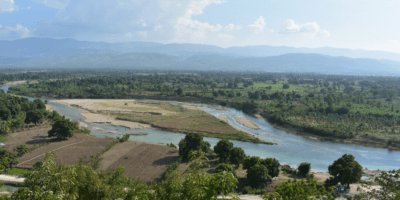
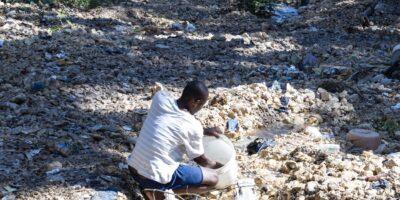


Comments